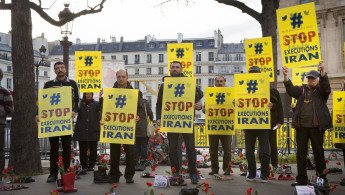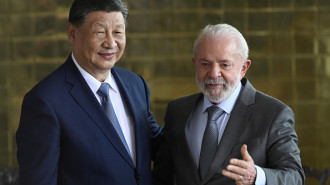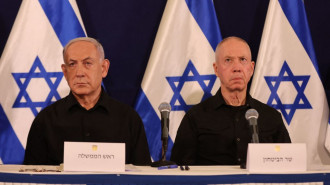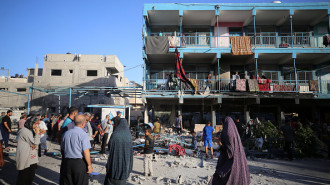Amnesty: Iran sealing off graveyard holding hundreds of 1988 massacre victims
Amnesty International has condemned Iran's fencing off of a cemetery to the public, which hosts mass graves that could hold key evidence of a 1988 massacre when thousands of political prisoners were likely killed.
The human rights group urged states on the UN Human Rights Council to demand Iran stop concealing mass graves at Kharavan and open an investigation into the alleged execution of an unknown number of political prisoners, mostly from leftist groups, over a five-month period in 1988.
Iranian authorities recently sealed off the Khavaran cemetry, near Tehran, with a two-metres high concrete wall, where the bodies of hundreds of political dissidents are believed to be buried.
Amnesty believes this is part of a campaign to cover up the massacre of regime opponents, which has been linked to senior Iranian figures such as President Ebrahim Raisi.
"The Iranian authorities cannot simply build a wall around a crime scene and think that all their crimes will be erased and forgotten," said Diana Eltahawy, Deputy Director for the Middle East and North Africa at Amnesty International.
"For 34 years, the authorities have systematically and deliberately concealed and destroyed key evidence that could be used to establish the truth about the scale of the extrajudicial executions carried out in 1988 and obtain justice and reparations for the victims and their families."
Families of the victims - mostly members of the People's Mojahedin Organization of Iran, but also the leftist Tudeh and Fedaian parties - have been campaigning for more information on the massacre, which remains to this day a closely guarded secret by the government.
No death toll has been given, but experts believe as many as 30,000 political prisoners were summarily executed over five months with the government refusing any investigation into the killings.
Tehran has also refused to issue death certificates for the missing and removed their names from burial records.
Iranians believe that closing the cemetery to the general public - via the installation of the wall and security cameras - will allow authorities to tamper with key evidence that could be used in any future investigations.
Amnesty has urged UN members to urgently pressure Tehran to halt the concealment of the graves and investigate the killings.
"It should shock the conscience of humanity that thousands of political dissidents remain forcibly disappeared in Iran, while those who should be investigated for serious crimes under international law have risen to top executive and judicial positions where they continue to inflict suffering on relatives," said Eltahawy.
"This abomination must end once and for all, and the UN Human Rights Council must urgently establish an independent investigative mechanism to uncover the truth and as a step towards bringing those suspected of responsibility to justice."
Since the massacre, Iranian authorities have bulldozed graves and memorials to the victims and even turned some mass graves into landfill sites.
Iranians have been banned from gathering at the cemetery or commemorating the victims. Families have even been banned from laying flowers at the graves with some jailed for seeking justice and clarification on the massacre.





 Follow the Middle East's top stories in English at The New Arab on Google News
Follow the Middle East's top stories in English at The New Arab on Google News


